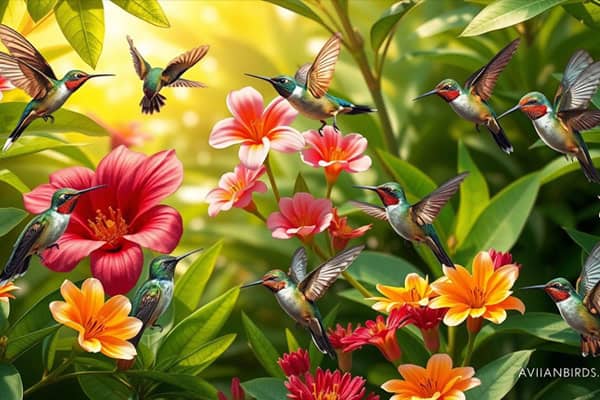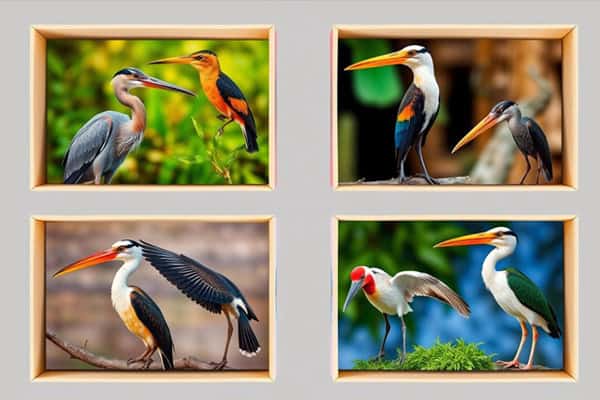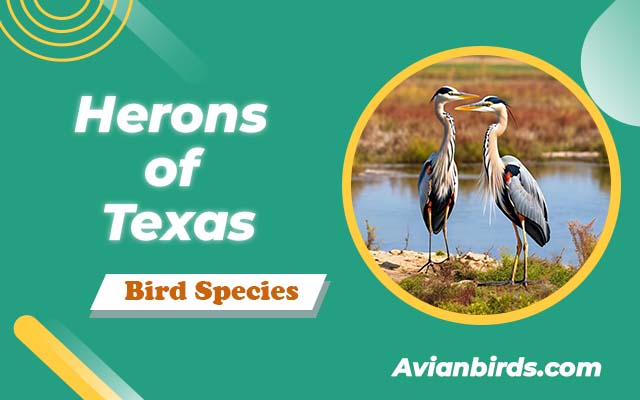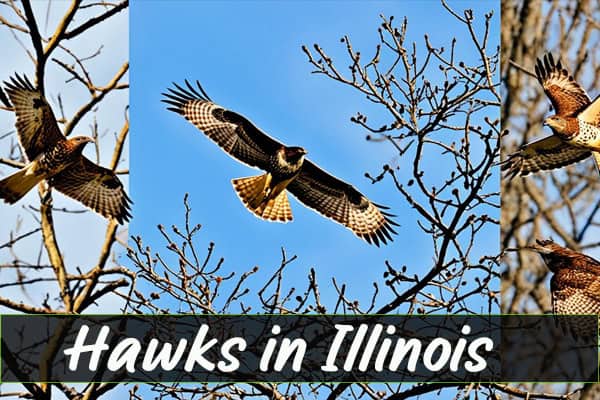5 Species of Hummingbirds in Florida (ID Guide)
Did you know Florida has over 30 hummingbirds species? Eight of these are common in the state. These birds are loved for their bright colors and quick moves. They are a big hit with birdwatchers and nature lovers.
This guide will show you the different hummingbirds in Florida. We’ll help you spot them by their looks and actions. You’ll learn about their homes, what they eat, and how to see more of them in Florida.
We’ll cover everything from the Ruby-throated Hummingbird to the rarer ones. You’ll get tips to make your birdwatching in Florida even better.
Hummingbirds in Florida: An Overview
Florida is a great place for hummingbirds, drawing in birdwatchers and nature fans. The Ruby-Throated Hummingbird, Rufous Hummingbird, and Anna’s Hummingbird are some of the most common. They love areas full of flowers, which give them the nectar they need and look beautiful.
When we watch birds in Florida, we see them flying from flower to flower. Also, Their bright colors make them easy to spot. Florida has many places where you can see these birds, like the coast and backyards with flowers. Watching them helps us learn about nature and why we should protect it.
- Key Hummingbird Species in Florida:
- Ruby-Throated Hummingbird
- Rufous Hummingbird
- Anna’s Hummingbird
- Preferred Habitats:
- Coastal areas with flowering plants
- Suburban gardens featuring nectar-rich flowers
- Woodlands and natural preserves
1. Ruby-throated hummingbird
- Scientific Name: Archilochus colubris
- Size: 7.5–9 cm (3–3.5 in)
- Weight: 2–4 g (0.07–0.14 oz)
- Lifespan: 3–5 years
- Diet: Nectar, small insects, and spiders
The Ruby-Throated Hummingbird is a common Hummingbird sight in eastern North America. It’s a joy to watch these birds. Knowing how to spot them makes our experience even better.
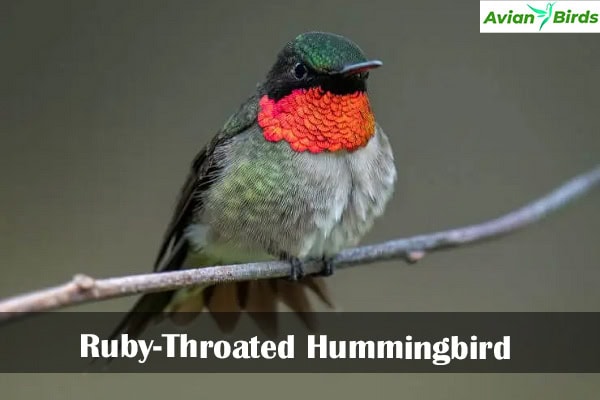
Physical Description
The hummingbird’s appearance is striking. Males have bright green backs and a red throat called a gorget. Females are less flashy with green backs and white bellies. They are small, about 2.8 to 3.5 inches long and weigh between 0.071 to 0.212 oz.
Behavior and Mating Rituals
Ruby-throated hummingbirds are solitary and defend their territory. Watching them can be thrilling. In hummingbird mating rituals, males fly in U-shapes to attract females. They also make hissing sounds.
Females build their nests high up in shrubs and trees. They lay two eggs and care for them for about 20 days. This shows their dedication to bird nesting.
2. Rufous Hummingbird
- Scientific Name: Selasphorus rufus
- Size: 7.5–10 cm (3–4 in)
- Weight: 3–4 g (0.11–0.14 oz)
- Lifespan: 5 years
- Diet: Nectar, small insects, and spiders
The Rufous Hummingbird is a rare sight in Florida, mostly found in the western U.S. We look forward to their visits during winter migration. These tiny birds travel up to 4000 miles between their summer and winter homes. Knowing where and when to look for them makes birdwatching exciting.
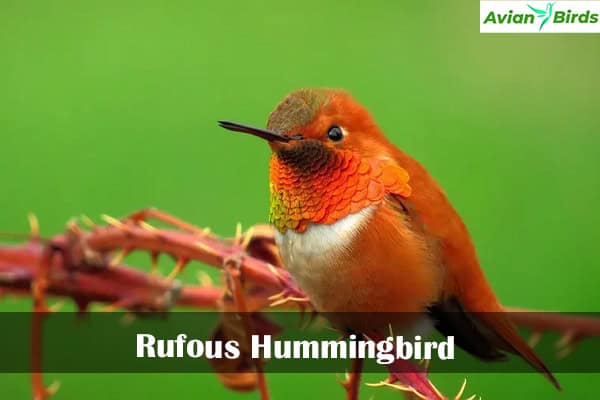
Migration Patterns and Identification
Spotting a Rufous Hummingbird is thrilling, especially in Florida. Males have bright orange-red throats and unique feathers. Females are more camouflaged in green and brown. Their rarity makes each sighting special.
Unique Feeding Habits
Rufous Hummingbirds have interesting ways of finding food. Males guard areas with lots of nectar, while females cover more ground. They drink nectar from flowers like red columbines. They also eat small insects for protein.
| Feature | Males | Females |
|---|---|---|
| Plumage Color | Vibrant orange-red throat, iridescent green back | Green and brown feathers |
| Feeding Behavior | Defends specific feeding territories | Covers larger areas for feeding |
| Main Nectar Sources | Red columbines, other brightly colored flowers | Similar as males, enjoys diverse flowers |
| Dietary Additions | Small insects for protein | Same dietary needs |
3. Black-Chinned Hummingbird
- Scientific Name: Archilochus alexandri
- Size: 8–10 cm (3.1–3.9 in)
- Weight: 3–4 g (0.11–0.14 oz)
- Lifespan: 3–5 years
- Diet: Nectar and small insects
The Black-Chinned Hummingbird is a stunning bird known for its black chin and bright green back. It lives in high places in the western United States. But sometimes, it visits Florida during its migration. This makes bird watchers in Florida very curious.
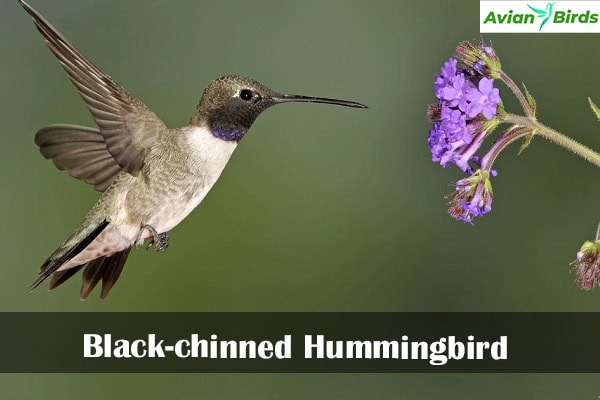
Learning about the Black-Chinned Hummingbird helps us see its special hummingbird characteristics. It can live in many places, which is why it sometimes shows up in Florida. This shows how adaptable it is, which is important for bird watching Florida and caring for nature.
Here are some details about the Black-Chinned Hummingbird:
| Characteristic | Description |
|---|---|
| Color | Black chin, vibrant green back |
| Habitat | Montane regions, occasional sightings in Florida |
| Migration | Occasionally migrates through Florida |
| Behavior | Notable adaptability to diverse environments |
Watching these birds in Florida helps us learn more about them. Helping to protect their homes is important for their survival. It shows how we all can help protect these beautiful birds.
Hummingbirds Found in Other Regions:
| Hummingbirds in Maryland |
| Hummingbirds in Michigan |
| Hummingbirds in New York |
| Hummingbirds In Virginia |
| Hummingbirds In Kansas |
4. Anna’s Hummingbird
- Scientific Name: Calypte anna
- Size: 9–10 cm (3.5–4 in)
- Weight: 3–4 g (0.11–0.14 oz)
- Lifespan: 4–5 years
- Diet: Nectar and small insects
The Anna’s Hummingbirds of Florida is a favorite among bird lovers for its bright colors and interesting ways. It comes from the western United States but is seen in Florida too. Knowing about Anna’s Hummingbird can make bird-watching in Florida more fun.
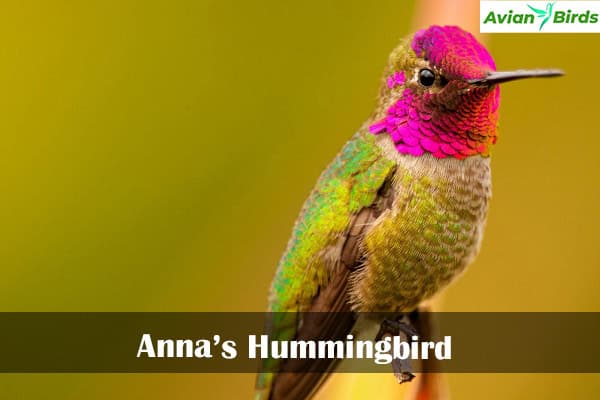
Distinctive Features and Range
This hummingbird stands out with its rose-red head and throat. Females have calmer colors. These features help us spot them easily among other birds. They like gardens, parks, and places with lots of flowers for food.
They live along the Pacific Coast and sometimes visit Florida. When bird watching in Florida, look for places with food and shelter for these birds. Keep an eye out for Anna’s Hummingbirds as they might surprise you with their visits.
| Characteristic | Males | Females |
|---|---|---|
| Coloration | Rose-red crown and throat | Green/gray with slight iridescence |
| Size | 3.9 inches | 3.5 inches |
| Habitat | Urban parks, gardens | Urban parks, gardens |
| Feeding Behavior | Frequent nectar foraging | Frequent nectar foraging |
5. Elegant Hummingbird
- Scientific Name: Eugenes fulgens
- Size: 10–12 cm (3.9–4.7 in)
- Weight: 4–5 g (0.14–0.18 oz)
- Lifespan: 3–5 years
- Diet: Nectar and small insects
The Elegant Hummingbird shines with its bright green and violet feathers. It’s a rare sight in Florida, making each sighting special. Bird lovers and casual watchers get excited to see it.
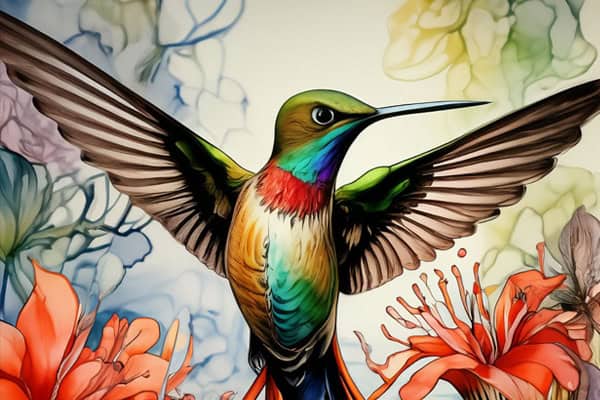
This hummingbird is rare and loved in Florida for its beauty. Spotting one makes birdwatching thrilling. Knowing how to spot this bird makes birding more fun.
This bird loves places full of flowers that have lots of nectar. We need to save these flowers in Florida. By doing this, we help these beautiful birds.
| Characteristic | Description |
|---|---|
| Plumage | Shimmering green and violet |
| Habitat Preference | Nectar-rich areas |
| Geographic Range | Primarily Mexico and western U.S. |
| Significance in Florida | Represents exceptional biodiversity |
Strategies for Observing Hummingbirds in Florida
To see hummingbirds in Florida, we should try a few key strategies. Start by visiting places with lots of flowers, like gardens, parks, and nature reserves. These spots are great for watching birds.
Using feeders with the right nectar mix can help us see hummingbirds up close. Remember to clean and refill the feeders often. The best times to see them are early in the morning and late in the afternoon.
Here are some tips for birdwatching:
- Stay quiet to not scare the birds.
- Wear colors that match the surroundings.
- Use binoculars or a camera with a zoom lens for better views.
Being patient is key when watching hummingbirds. We need to stay still and watch closely. Knowing their habits helps us see their amazing flying and feeding behaviors. This makes our birdwatching trips more exciting.
| Time of Day | Activity | Best Locations |
|---|---|---|
| Early Morning | Feeding and territory marking | Flowering gardens |
| Late Afternoon | Social interactions and foraging | Parks and nature reserves |
| All Day | Visiting feeders | Backyards with nectar plants |
By using these tips, we can make a great place for watching hummingbirds in Florida. Seeing these birds in action is very rewarding. Let’s get ready for our next birdwatching trip!
Best Locations to Spot Hummingbirds
Florida is a top spot for seeing hummingbirds in the wild. By visiting these sites, we can learn more about these birds. Some great places to see hummingbirds in Florida include:
- Corkscrew Swamp Sanctuary – A big wetland with lots of plants that hummingbirds love.
- Archbold Biological Station – A place with different kinds of nature that attracts hummingbirds and other animals.
- Merritt Island National Wildlife Refuge – Perfect for nature fans, with trails full of flowers that hummingbirds enjoy.
- Everglades National Park – A famous park where you can see hummingbirds in beautiful settings.
Each spot has flowers that draw in different hummingbirds. By visiting these places, we get to see these birds up close. We also learn about their lives and where they live.
| Location | Flora | Species Typically Seen |
|---|---|---|
| Corkscrew Swamp Sanctuary | Wildflowers, native grasses | Ruby-Throated Hummingbird |
| Archbold Biological Station | Longleaf pine, flowering shrubs | Black-Chinned Hummingbird |
| Merritt Island National Wildlife Refuge | Native wetlands, nectar-rich plants | Rufous Hummingbird |
| Everglades National Park | Various tropical plants, flowers | Anna’s Hummingbird |
By visiting these great spots, we help protect nature and see hummingbirds up close. Let’s take our binoculars and explore the trails for a memorable time with hummingbirds!
Conservation Efforts of Hummingbirds in Florida
In Florida, many groups work hard to save hummingbirds. They know it’s important to protect their homes as cities grow. We must stop losing their homes due to cities and farms getting bigger.
There are many Florida bird conservation efforts to spread the word about hummingbirds’ problems. Pesticides and climate change hurt their food and how they migrate. By telling people about these dangers, we can make them care more.
- Promoting native plant gardens that attract hummingbirds.
- Creating wildlife-friendly spaces to support overall biodiversity.
- Encouraging local residents to practice bird-friendly gardening techniques.
Working together in our communities is key to making a difference. By joining forces, we can do more to protect hummingbirds. With education and action, we can make sure these birds are around for the future.
Read More 🐦Articles:
| Doves in Michigan |
| Hummingbirds in Maryland |
| Birds with Long Beaks |
| Birds Chirping at 3AM Spiritual Meaning |
| Mythical Birds and Creatures |
Conclusion
Florida’s hummingbirds bring beauty and importance to our world. They amaze us with their bright colors and quick moves. These birds are not just a joy to watch but also vital to their homes.
Learning about their lives and how we can help is key. This helps us see why we must protect these amazing birds.
Every time we see a hummingbird, it’s a chance to connect more with nature. By carefully watching birds, we help protect them. We must support efforts to save Florida’s birds.
To help hummingbirds, we can grow plants that they need for food. Every little bit we do helps these birds and our environment. Together, we can make a big difference and keep hummingbirds around for a long time.

